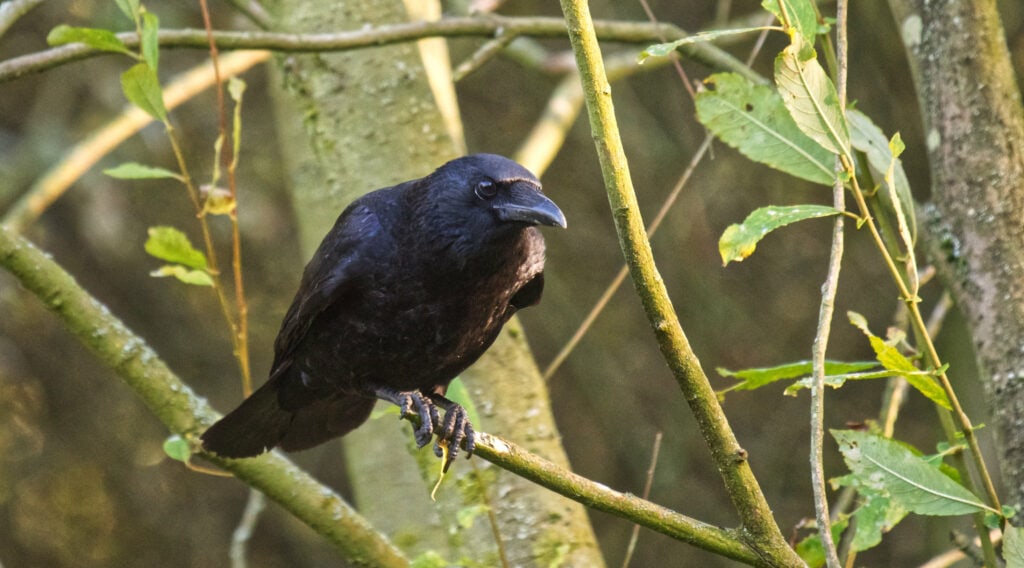There are a number of reasons why homes and businesses choose to install bird deterrents. From simple plastic owls to scare off sparrows to rows of metal spikes designed to encourage pigeons to roost elsewhere, anti-bird devices have become a fairly commonplace part of the complex, and sometimes strained, relationship that humans and wildlife share within our shared habitats. In urban environments, this relationship is especially difficult. Humans like to exercise a certain degree of control over our environments. We build cities, high-rises, infrastructure, until the landscape is no longer recognizable as what it was when we found it. For the wildlife that persist in these strange new man-made lands, a bit of improv is needed.
Related Article: Nonprofit Sues for Owl Protections in the Sonoran Desert
Enter the great masters of improv: the corvids. Recent discoveries in the Netherlands, Belgium, and Scotland point to a new phase in the bird deterrent arms race. Corvids have long been touted for their superior intelligence. Some crows have been studied for their ability to solve complex puzzles, with a few even out-performing primates in certain studies. Now, it seems that corvids have turned their clever brains toward the task of overcoming anti-bird spikes.
Several nests constructed by Carrion Crows and Eurasian Magpies were found to contain or be constructed from anti-bird spike strips. One of the nests in question, a Eurasian Magpie nest found in a hospital courtyard in Belgium, was discovered to contain as many as 1,500 spikes adding up to about 50 meters of anti-bird spike strips.
What’s really incredible about this is the fact that, not only are these corvids overcoming human deterrents, they may even be using them as intended. One of the biggest threats to a nest is invasion by predators, most often other birds. Birds have a vested interest in finding ways to thwart intrusions by fellow birds who would happily eat their eggs or young. To that end, a fortress of specially designed anti-bird spikes has major advantages. Provided that the parents and offspring are clever enough to safely navigate it, such a nest would pose a serious challenge to predators and thus contribute to the safety and success of the nest.
In an ever-changing environment shaped by humans, an animal must be smart, scrappy, and resourceful to survive. To truly thrive, though, one must also be imaginative and curious. Maybe this is why corvids are such survivors. Like the greatest human thinkers, they’ve approached a challenge designed to turn them away and turned it on its head. In doing so, they may have discovered an advantage that will help them thrive.
Popular Article: Extinct Bachman’s Warbler Genome Sequenced

